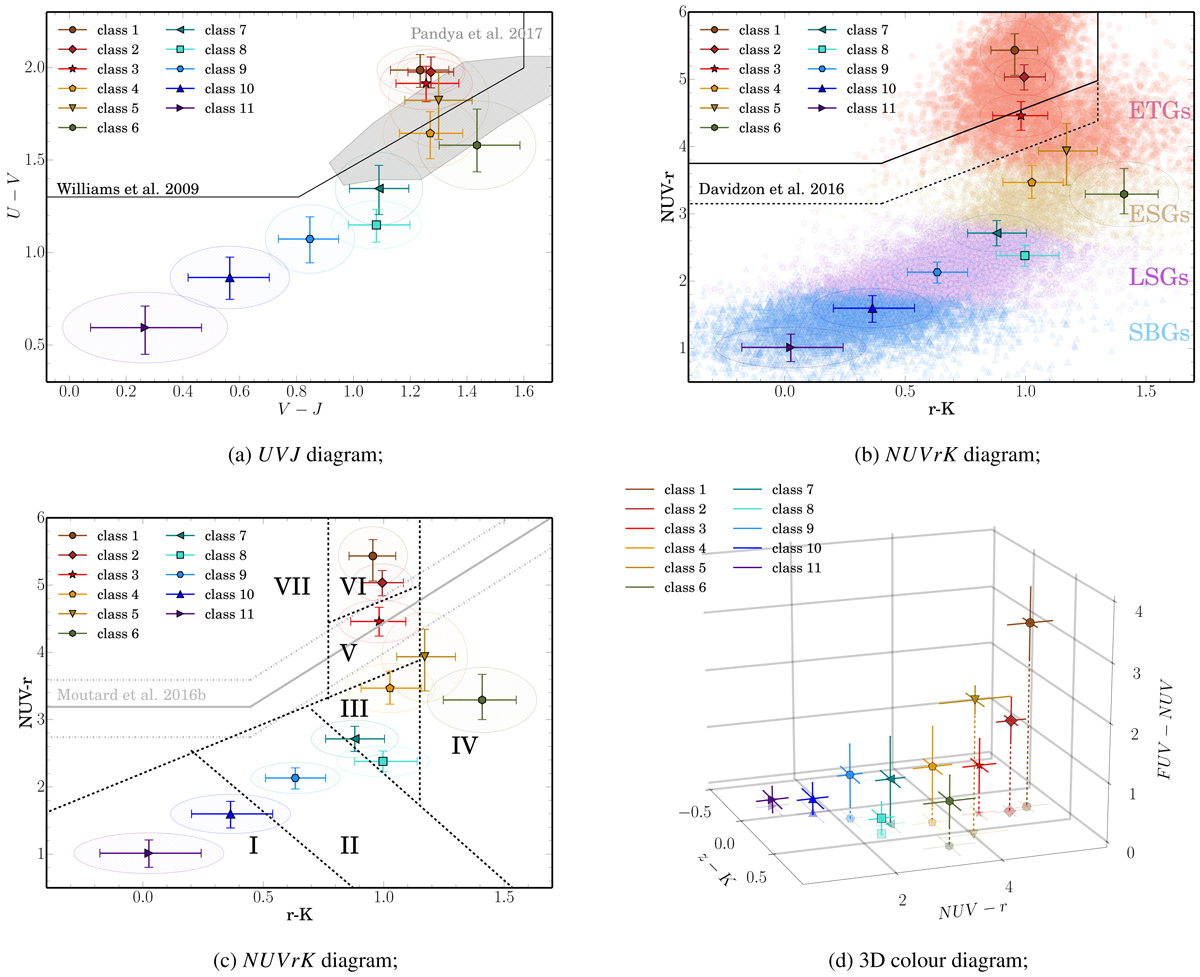Fig. 2.

Colour–colour(–colour) diagrams of the VIPERS galaxies classified into 11 classes with the FEM algorithm. The error bars correspond to the first and the third quartile of the galaxy colour distribution, while the two half axes of the ellipses correspond to the median absolute deviation. Panel a: UVJ diagram. The solid line corresponds to the standard separation between quiescent and star-forming galaxies. The area occupied by CANDELS transition galaxies is shown as a grey shaded area (Pandya et al. 2017). Panel b: NUVrK diagram. The black solid line corresponds to the separation of red passive galaxies, and the dotted line separates additionally galaxies located in green valley. Galaxies photometrically classified by their SED type as: (1) early-type (red E and Sa; ETGs), (2) early spiral (ESGs), (3) late spiral (LSGs), and (4) irregular or starburst (SBGs) following the prescription given in Fritz et al. (2014) are marked with light salmon, gold, violet, and blue, respectively. Panel c: NUVrK diagram. The black dashed lines corresponds to the division of CFHTLS galaxies into seven groups proposed by Moutard et al. (2016a). The grey solid line corresponds to the separation of red passive galaxies. The grey dash-dotted lines correspond to upper (lower) limits of the green valley galaxies proposed by Moutard et al. (2016b). Panel d: 3D diagram. The dotted lines indicate the projection of FEM classes on the bottom plane (z − K vs. NUV − r).
Current usage metrics show cumulative count of Article Views (full-text article views including HTML views, PDF and ePub downloads, according to the available data) and Abstracts Views on Vision4Press platform.
Data correspond to usage on the plateform after 2015. The current usage metrics is available 48-96 hours after online publication and is updated daily on week days.
Initial download of the metrics may take a while.


